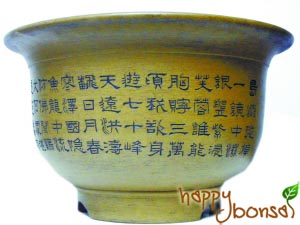Bonsai pots come either unglazed or glazed. While some bonsai lovers like glazed bonsai pots, some others prefer the unglazed ones. There are different opinions on whether we should go for a glazed bonsai pot or an unglazed one, and ultimately, it comes down to personal choice. Yet, before we purchase our bonsai pots, here are a few points that we should first consider.
- Unglazed bonsai pots allow the roots of the bonsai tree to breathe better. And by the same token, unglazed bonsai pots lose moisture through their walls faster than glazed bonsai pots.
- Glazed bonsai pots retain more moisture; hence we probably don’t need to water as often. However, air cannot move through a glazed bonsai pot as well as an unglazed one. If it is a tropical bonsai tree we have, we may want to consider using a glazed bonsai pot since tropical trees live in humid regions love moist soil.
- In general, a dark colored unglazed bonsai pot can give a classic bonsai tree a stronger sense of age.
- A glazed bonsai pot may be more appropriate for a flowering bonsai tree.
- Never ever use a bonsai pot that is glazed on the inside. Without an unglazed surface, the root of the bonsai tree cannot get a firm grip on the inside surface of the bonsai pot.
There are many bonsai pots for us to choose from. Besides glazed and unglazed, there are also many different sizes and shapes, large variety of colors and materials. As said, it all comes down to personal choice. Just remember to pick a bonsai pot that not only compliments with the bonsai tree, but also provide a suitable environment for the roots.




























